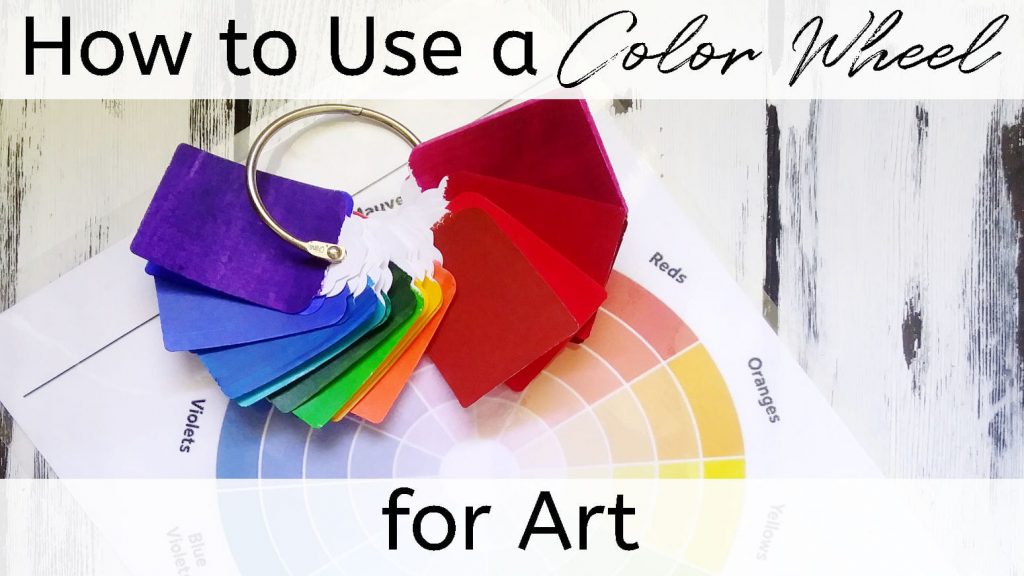Most people are familiar with color wheels but typically associate them with home décor and design. However, using a color wheel for art can be immensely helpful for beginners.
You may have come across other articles where the artist/writer has the opinion that the color wheel isn’t all that important but I respectfully disagree, especially if you’re a beginner.
As your paint collection continues to grow, and you start to experiment more on your own, there is the greater potential for color mixing mishaps. If you have a handy dandy color wheel for art nearby, you can easily save yourself a lot of frustration and wasted paint.
Let’s take a look at how using a color wheel for art can help you with your painting projects.
In This Article...
What is a Color Wheel
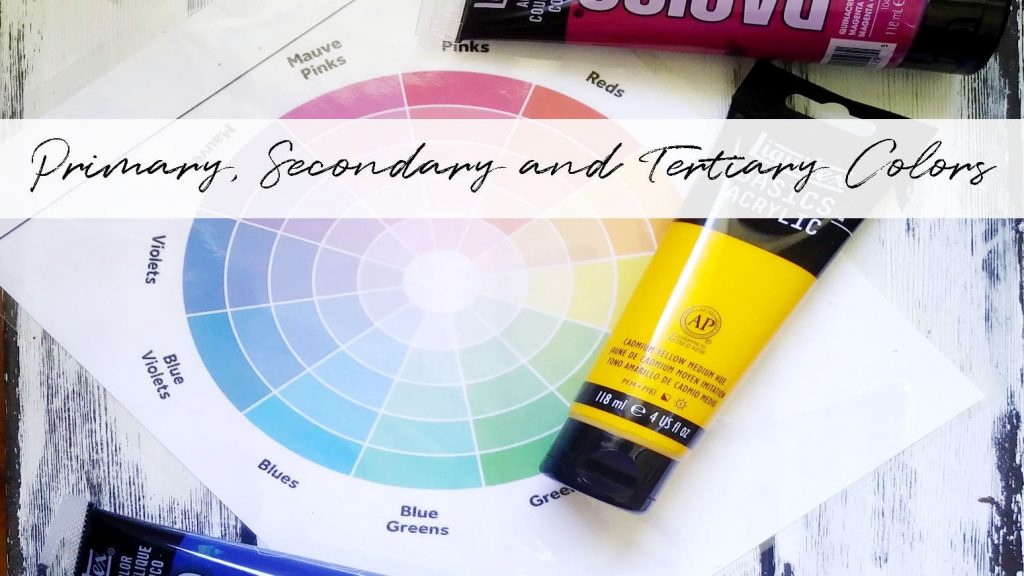
A color wheel is a circle with all of the colors of the rainbow. It is made up of primary colors, secondary colors, and tertiary colors.
Primary colors are the base for all other colors. Some artists use red, blue, and yellow while others prefer using magenta, cyan, and yellow. To keep things simple, we’ll stick with red, blue, and yellow.
Secondary colors are the colors that you make when you add one primary color to another primary color. So, that would be:
- Red + Blue = Purple
- Blue + Yellow = Green
- Yellow + Red = Orange
Tertiary colors are the colors you get when you mix a primary color with a secondary color. For example, if you mix the primary color yellow with the secondary color green you’ll get the tertiary color of lime green. On the other hand, if you mix blue with green, you’ll get more of a turquoise or teal.
Color wheels can be very simple, using very basic colors such as purple, blue, green, yellow, orange, and red but they can also be more detailed.
A detailed color wheel has more variations of the basic colors and each color can be expanded by showing both tints (what happens when you add white) and shade (what happens when you add black).
The variations are organized based on whether they lean more toward the color sitting on its left or on its right. For example, green can be on the cooler side which would mean it leans more toward blue but it can also become warmer if it leans more toward yellow. It’s the difference between a rich teal green and a bright lime green.
Why Use a Color Wheel for Art
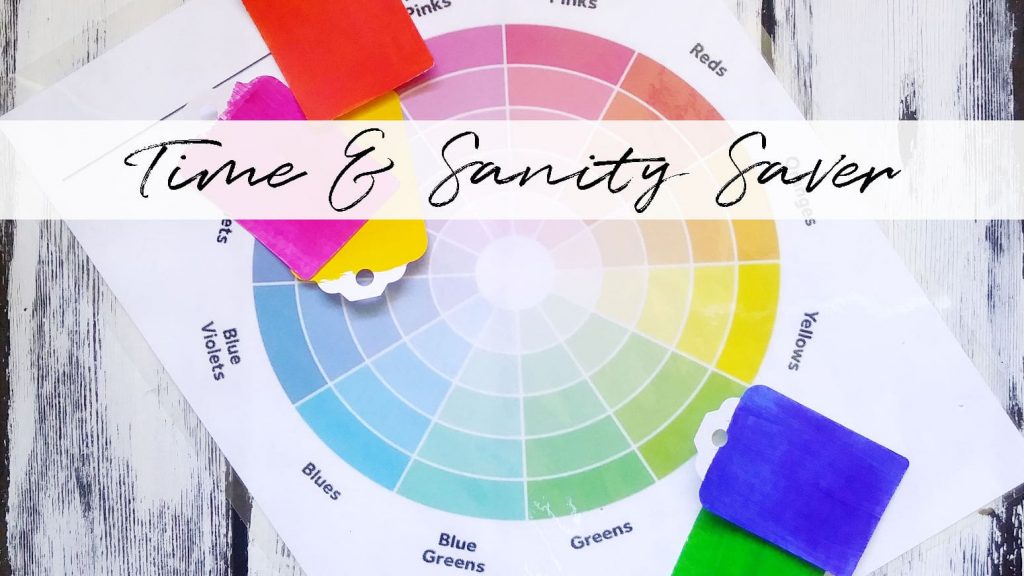
Do you absolutely need to use a color wheel for art? Naw, but it’s an extremely useful tool to have in your tool kit. In fact, I have mine right where I store my paints so I can refer to it when needed.
Using a color wheel for art work can save you a lot of time. Let’s say you’re following along with a YouTube tutorial and they have listed a specific color but it’s not a color that you have on hand. You can do a quick google on the required color to see if it’s warm or cool and then you can look at the colors you have and choose the warmest tone of the same color. Your painting won’t look exactly the same as the tutorial but there’s nothing wrong with that! In fact, that’s how you start branching out into doing your own thing by learning to trust your choices and instincts.
It’s also really helpful to use a color wheel for art when you are trying to create a vibrant masterpiece and, also, when you want to accomplish the exact opposite effect. This is where complementary colors come into play.
If you choose any color on the color wheel and draw an imaginary straight line directly across from it you’ll find the complementary color. In simple terms, green and red are complimentary, as are yellow and purple, and blue and orange.
Here’s the deal with complementary colors, they love hanging out with each other but they certainly don’t want to get too close and personal. If you paint complementary colors next to each other, they make each other pop and really showcase each other’s vibrancy. On the other hand, if you mix complementary colors together, you’re going to end up with either grey or brown.
Don’t get me wrong, making grey and brown using complementary colors has its place and opens up a ton of possibilities to create custom colors with lots of personality and oomph but it’s not so fun when that’s NOT what you were planning.
So, if you want to create a painting where complimentary colors are directly next to each other, make sure one is dry before you paint the other.
Then, there are harmonious colors, which sit next to each other on the color wheel. They’re the paint colors that create a sense of peace and calm when used for a painting. For example, blues, greens, teals, and turquoise are all harmonious with each other which is a big reason why water paintings are so peaceful and relaxing. Be careful to not overuse harmonious colors in a painting or your risk it being way too peaceful and possibly even boring. If this happens just add a bit of a complementary color, here and there, to liven things back up.
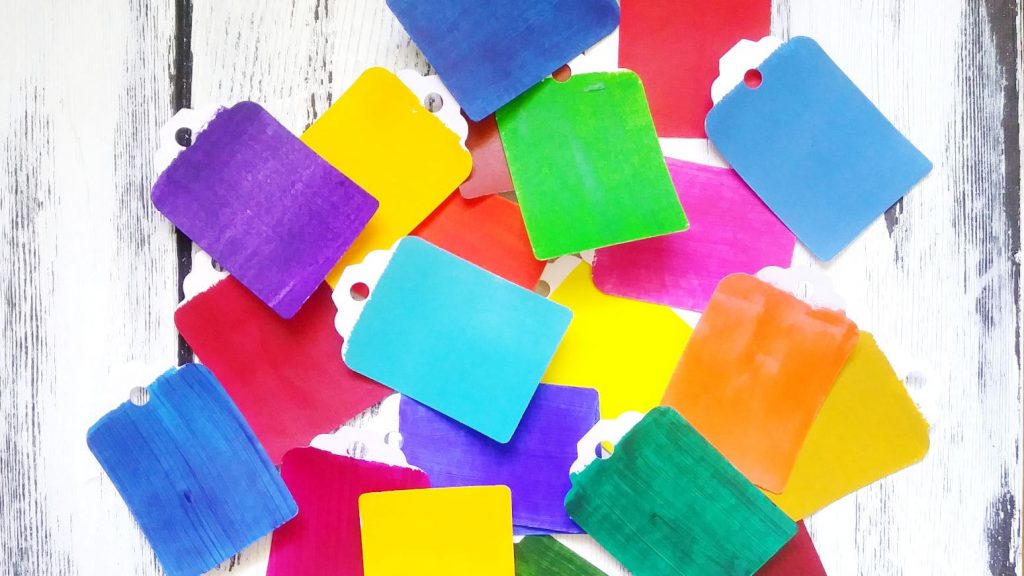
What about Black and White Paint?
Oy, this is another one of those controversial areas in art. Everyone will have a different opinion about this but, when it comes to the color wheel, we’ll think of black and white paint as a seperate thing altogether. Simply put, black absorbs all color and white is the end result of mixing all color together.
But, let’s back up a bit. When we talk about black and white in this sense, we are talking about wavelengths and visible light/spectrum and it’s all sciency and stuff. Just don’t think you can mix all of your paints together and get white. Doing that would not make you happy.
In painting, we can use black paint to darken a color and white paint to lighten a color. Keep in mind, though, that both black and white alter the vibrancy of the color and may even give you an unexpected result (I’m lookin’ at you, Mars Black and Cad Yellow!).
Also, both black and white can lean more toward cool or warm which will help determine the final color that you end up with when you mix them with your other paint colors. When we work with black and white paint, we’re actually painting with “almost” black and “almost” white.
Free Printable Color Wheels for Art
In a moment, I’m going to show you how to make your own color wheel but, if you don’t want to make your own custom color wheel for art, I’ve scoured the net to find a few good examples that you can download and print so you can be on your merry way.
- Dream Home Decorating has some great color wheels but this one is particularly good because it shows you complimentary colors next to each other. This really showcases how the colors pop when they play nicely
- SCYAP (Saskatoon Community Youths Art Programming) has an easy to understand color wheel that you can download and another one that you can customize
- Believe it or not, Crayola Teachers has some great free downloads of color wheels, particularly the first color wheel for art listed under “Elements of Art”. Just keep scrolling down the page and you’ll eventually see it
How to Make a Simple Color Wheel for Art
If you were hoping to create your own color wheel for art, that you can add all of your current paint colors plus add new colors as your paint collection grows, I’ve got you, friend! This color wheel is so useful because you can use it as a traditional color wheel, you can keep track of your paint collection, you can see all of the options you have for a color and see how they differ when it comes to warm or cool colors, and you can hold paint chips up to a work in progress to see which hue will work best for what you’re trying to do.
Without further ado, let’s make our own color wheel for art that will include all of the paint colors we have and be flexible enough to expand as we get more and more paint colors.
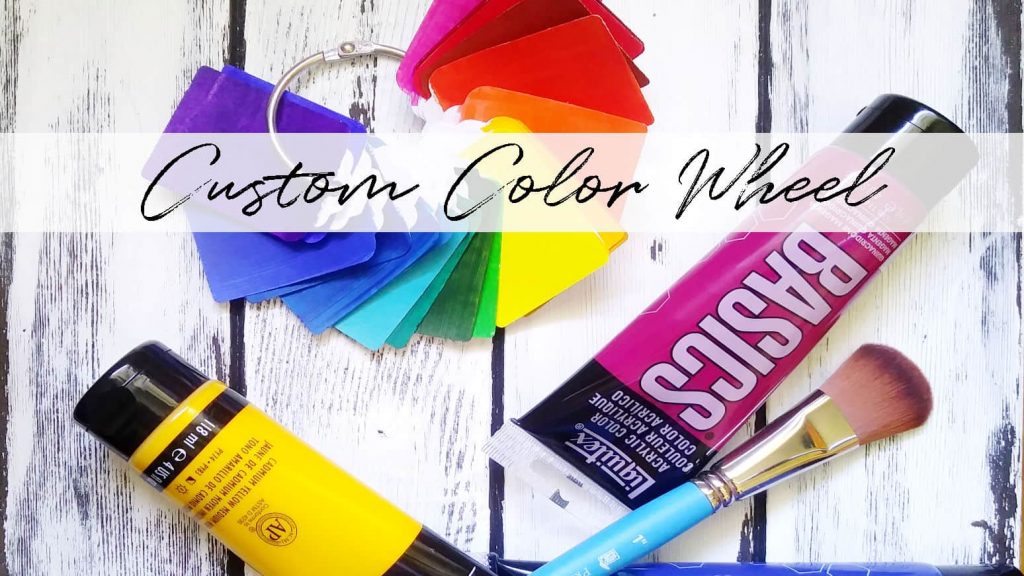
Supplies Needed
- Metal ring (usually called a craft ring or a loose-leaf ring) or a piece of rope, ribbon, or string
- Thick paper, like white cardstock, or thin cardboard painted white, even white Bristol board will do
- Scissors or a fun paper punch
- Paint brushes
- Paint
- Hole punch
- Jar of clean water and a rag for cleaning your brush well between colors
- Pen or pencil to write on the back of each paint chip
Directions
- Gather up all of your paints and organize them by color
- Create as many paint cards as you have of different colored paint, using scissors or a fancy paper punch
- Paint all of the paint cards you just made until you’ve got one “paint chip” for each color of paint you have
- As you’re painting the chips, consider writing on the back the name of the paint, the brand, and any other info you feel is important to know
- Once completely dry, punch a hole near the edge of each paint chip so that the longer sides are vertical
- Start threading the paint chips on the metal ring/rope, etc., keeping all the same colors together and paying attention to which way each paint chip leans (so if you have a blue, is it more of a purple blue or a green blue compared to the other blues you have?)
- Once you’ve got all of your paint chips threaded onto your “ring”, fan them out and double check to see if you feel like they are in the right order (ex.: if you have three reds, do you have a red that’s more of an orange (warm) red? That would be placed closer to orange. Do you have a red that’s cooler than your other reds? That would be placed closer to purple.)
Once you’ve created your color wheel for art, I suggest adding to it as you bring new paints into your kit. If you come up with your own color mix, don’t forget to add that to your color wheel, as well! That way you can see exactly where it fits in with your other paints and you can write the recipe on the back so you’ll always know how to re-create it.
Wrap Up
So, now that you know what a color wheel for art is all about and you know how to make your own custom and expandable color wheel, would you say knowing how to use one and keeping one handy is important to you, personally? Let me know in the comments below.
If you’re looking to use your newfound knowledge check out my article “Acrylic Blending for Beginners” or even “How to Paint a Sunset”. Both articles are a great way to practice and experiment with harmonious and complimentary colors.
Related Articles:
- Learn How To Make A Color Palette From A Photo For Your Next Original
- Free Turquoise Color Mixing Recipes
- How To Make Coral Acrylic Paint

Meet Sara, a seasoned veteran in the world of art. With a knack for mixing paints to unveil breathtaking new hues, she’s adorned countless commissions and independently captivated art enthusiasts with her creations. Having spent over a decade immersed in the realm of art gallery management, Sara’s insight into the intricacies of the art scene shines through her work.
But don’t let her impressive résumé fool you – Sara’s approach to art is as lively as her palette. Known for her wit and humor, she infuses her passion for painting with a playful spirit, making every stroke a delightful adventure. As a dedicated mentor, she’s committed to guiding her fellow artists towards success, always staying ahead of the curve with the latest techniques and trends.

